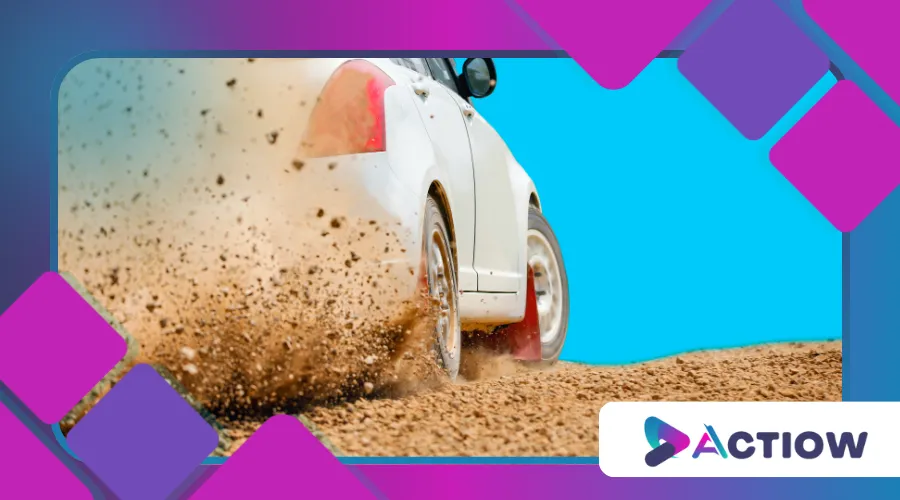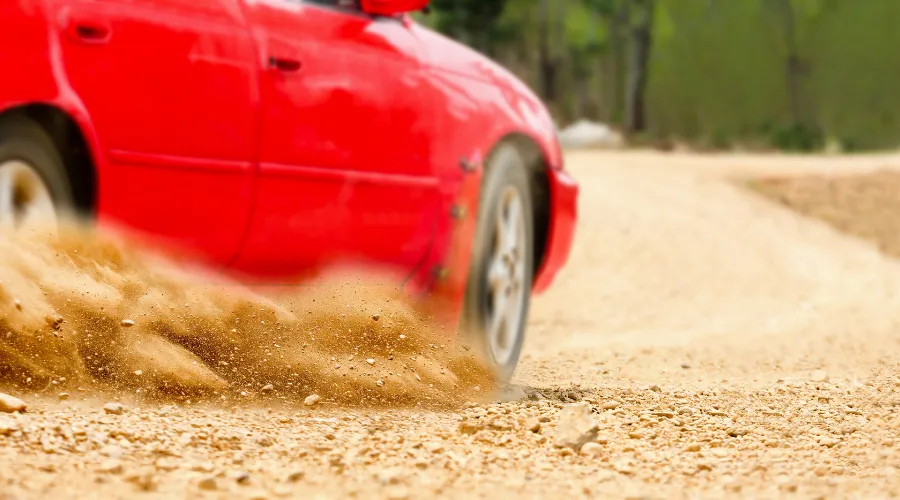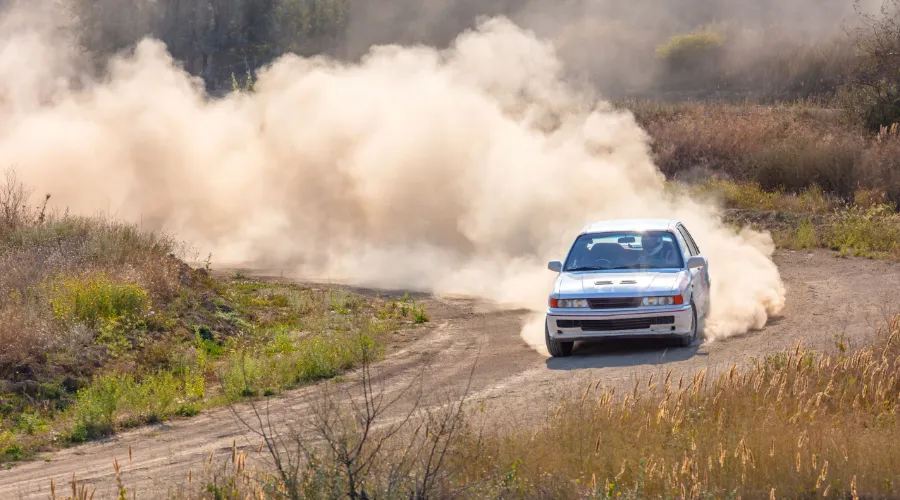Tips for Driving on Dirt Roads Without Damaging Your Car

Anúncios
Driving on dirt roads without damaging your car requires skill, preparation, and an understanding of how rugged terrain interacts with your vehicle.
Unpaved paths, from dusty trails to muddy backroads, can test even the most seasoned drivers.
Unlike smooth asphalt, these surfaces are unpredictable, with loose gravel, ruts, and hidden obstacles threatening tires, suspension, and undercarriage.
Anúncios
Yet, with the right techniques, you can navigate these roads confidently while keeping your car in top shape.
This guide offers practical, actionable advice to protect your vehicle, blending technical know-how with creative strategies to tackle the challenges of off-road terrain.
Let’s dive into how you can master dirt roads and keep your car safe.
Why Dirt Roads Demand Respect
Dirt roads aren’t just “unpaved highways.”
They’re dynamic environments shaped by weather, traffic, and geology.
A 2021 study by the National Highway Traffic Safety Administration (NHTSA) found that rural roads, including unpaved ones, account for 33% of fatal crashes in the U.S., despite lower traffic volumes.
Loose surfaces reduce traction, and sudden obstacles like rocks or washouts can catch drivers off guard.
Driving on dirt roads without damaging your car means respecting these conditions and adapting your approach.
Think of your car as a hiker crossing a rocky trail: slow, deliberate steps preserve energy and prevent injury, while rushing invites disaster.
Moreover, understanding the unique characteristics of dirt roads can enhance your driving experience.
The more you learn about the terrain, the better prepared you’ll be to handle unexpected challenges.
1. Prepare Your Vehicle for the Challenge
Before hitting a dirt road, ensure your car is ready for the task.
Check tire pressure and tread depth, as underinflated or worn tires struggle for grip on loose surfaces.
A tire with at least 6/32-inch tread depth is ideal for dirt, offering better traction than slick highway tires.
Inspect your spare tire, jack, and tools—remote dirt roads aren’t the place to discover a missing lug wrench.
Consider skid plates or underbody shields if your vehicle’s ground clearance is low; they’re like armor for your oil pan against jagged rocks.
Example: Imagine Sarah, a weekend adventurer, driving her sedan on a gravel road to a remote campsite.
She didn’t check her tire pressure beforehand, and halfway through, a sharp rock punctures her underinflated tire.
Stranded without cell service, she faces a long wait for help.
A quick pre-trip inspection could’ve saved her day.
Additionally, keeping an emergency kit in your vehicle can provide peace of mind.
Include items like a flashlight, first aid supplies, and basic tools to handle minor repairs on the spot.
+ How to Store Your Car for Long Periods Without Damage
Vehicle Prep Checklist
| Item | Why It Matters |
|---|---|
| Tire Pressure | Ensures optimal grip on loose surfaces |
| Tread Depth | Prevents skids and punctures |
| Spare Tire & Tools | Critical for roadside repairs |
| Skid Plates | Protects undercarriage from rocks |
| Fluid Levels | Prevents overheating or breakdowns |
2. Master the Art of Speed Control
Speed is your enemy on dirt roads.
High velocities reduce reaction time and amplify damage from impacts.
Driving on dirt roads without damaging your car means embracing a slower pace—typically 15-25 mph, depending on conditions.
Use lower gears to maintain control without sudden throttle bursts, which can cause wheel spin and dig ruts.
On descents, let engine braking do the work instead of riding the brakes, which can overheat and fail.
Analogy: Driving on a dirt road is like dancing with a partner you don’t fully trust.
Move too fast, and you’ll step on their toes—or worse, trip over a hidden obstacle.
Smooth, deliberate motions keep you both in sync.
Moreover, practicing consistent speed can help you anticipate changes in the road ahead.
This foresight allows you to react appropriately, minimizing the risk of accidents or damage.

3. Read the Road Like a Story
Every dirt road tells a tale through its surface.
Ruts signal heavy traffic or recent rain; loose gravel hints at poor traction; washboards suggest high-speed abuse.
Scan far ahead to spot obstacles early, and avoid sudden swerves that stress suspension components.
If you see standing water, test its depth with a stick—hidden potholes can bend rims or snap axles.
Driving on dirt roads without damaging your car hinges on interpreting these clues before they become problems.
Example: Jake, a photographer chasing a desert sunset, ignored a deep rut on a sandy track.
His SUV’s front wheel caught, jarring the alignment and leaving him limping back to town.
Had he slowed to “read” the road, he’d have avoided the costly repair.
Additionally, becoming familiar with common road patterns can enhance your driving skills over time.
The more you practice, the better you’ll become at recognizing and responding to different road conditions.
4. Protect Your Tires and Suspension
Tires and suspension bear the brunt of dirt road abuse.
Sharp rocks can slash sidewalls, while potholes stress shocks and struts.
To minimize damage, stick to the road’s center where possible, as edges often hide soft shoulders or debris.
If obstacles are unavoidable, approach at an angle to distribute impact across the tire’s tread, not its sidewall.
Driving on dirt roads without damaging your car means treating your tires like prized running shoes—protect them from unnecessary punishment.
Common Dirt Road Hazards
| Hazard | Potential Damage | Prevention Tip |
|---|---|---|
| Sharp Rocks | Tire punctures, sidewall cuts | Drive slowly, angle over obstacles |
| Potholes | Bent rims, broken suspension | Scan ahead, reduce speed |
| Washboards | Vibration damage to joints | Maintain steady, moderate pace |
| Soft Shoulders | Stuck vehicle, alignment issues | Stay centered on the road |
Moreover, regular tire maintenance is crucial for off-road driving.
Rotating your tires and checking for uneven wear can prolong their lifespan and improve performance on rough terrain.

++ Smart Tips to Save Fuel and Boost Your Car’s Efficiency
5. Adapt to Weather and Surface Changes
Dirt roads shapeshift with the weather.
Dry gravel offers decent grip but kicks up dust, reducing visibility.
Mud turns roads into skating rinks, demanding smooth inputs to avoid skids.
After rain, even familiar routes can sprout new ruts or washouts.
Check local weather forecasts before heading out, and carry recovery gear like a tow strap or traction mats.
Driving on dirt roads without damaging your car means staying adaptable, like a sailor adjusting sails to shifting winds.
Statistic: According to the Federal Highway Administration, 75% of unpaved road damage in the U.S. occurs during wet seasons, highlighting the need for weather awareness.
Being informed about the conditions can help you plan your route more effectively and avoid hazardous areas.
6. Use Technology Wisely
Modern tech can be a dirt road ally.
All-wheel-drive systems improve traction, but they’re not invincible—overreliance can lead to stuck vehicles.
GPS apps like Gaia or OnX Offroad provide detailed trail maps, helping you avoid dead ends or rough sections.
Tire pressure monitoring systems (TPMS) alert you to slow leaks before they strand you.
But don’t let gadgets replace skill.
Driving on dirt roads without damaging your car requires blending tech with old-school road sense.
Additionally, dash cams can be beneficial for documenting your adventures and any potential hazards.
They can also provide evidence in case of an accident or dispute over road conditions.
7. Know When to Turn Back
Pride can be a car’s worst enemy.
If a road looks too rough—deep mud, steep grades, or boulder-strewn paths—don’t push your luck.
A $500 tow bill is cheaper than a $5,000 repair.
Assess your vehicle’s limits: a stock crossover isn’t a Jeep Wrangler.
Ask yourself, Is this photo op worth a busted axle?
Driving on dirt roads without damaging your car sometimes means admitting defeat and finding another route.
Moreover, having an exit strategy can save you time and money.
Always have alternative routes planned in case conditions worsen or become impassable.
For more information on safe driving practices on unpaved roads, visit AAA’s Guide to Driving on Dirt Roads.
8. Post-Trip Maintenance Matters
After a dirt road adventure, your car needs TLC.
Wash the undercarriage to remove corrosive mud or salt, which can rust metal components.
Check for loose bolts, leaking shocks, or sidewall cuts.
A quick alignment check at a shop can catch issues before they worsen.
Driving on dirt roads without damaging your car doesn’t end when you hit pavement—it’s about follow-through to keep your vehicle trail-ready.
Additionally, scheduling regular maintenance checks can help identify potential issues before they become serious problems.
This proactive approach ensures your vehicle remains in top condition for future adventures.
Conclusion: Drive Smart, Drive Safe
Dirt roads offer adventure, but they demand respect.
By preparing your vehicle, controlling speed, reading the terrain, and adapting to conditions, you can conquer unpaved paths without costly repairs.
Driving on dirt roads without damaging your car isn’t just about technique—it’s about mindset.
Approach each trail with patience and foresight, and you’ll return with stories, not repair bills.
So, next time you hear the call of the wild, will you be ready to answer without breaking your car—or your budget?
